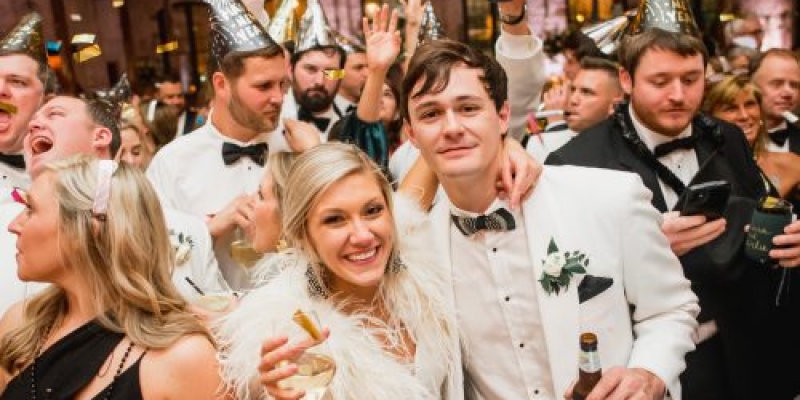
When I joined the Charleston Weddings team as editorial assistant in 2011, I—an unwed gal new to town—knew little about weddings, let alone what differentiated those in Charleston from others held south of the Mason-Dixon. Today though, I can sketch a Chiavari chair with my eyes shut and am thoroughly convinced we live in a mecca for romance (one glance at an oak allée draped in Spanish moss did the trick). But being ever-eager to learn more about local wedding lore, I tagged along with Mary Margaret Cornelius one weekend to see what was on her “Bridesmaids Tour.”
Though I wasn’t—as is the norm—part of a bachelorette party or there on a pre-wedding outing, within minutes of meeting bubbly Mary-Margaret at the White Point Garden gazebo on the Battery, I was in the matrimonial spirit. “I love starting here because it’s one of the most popular spots for couples to marry in Charleston,” said Mary-Margaret, who’s been leading women’s history tours of the area for three years. “During almost all of my bridesmaid tours we usually see a proposal or wedding, or at least spot rose petals on the ground, proof that there was a ceremony here the evening before.”
From the park, we crossed South Battery Street to Two Meeting Street Inn. The Queen Anne-style bed and breakfast, Mary-Margaret explained, was gifted from wealthy Charleston merchant George Williams to his daughter Martha on her wedding day in 1890. “It’s a great idea for any father,” Mary-Margaret said with a laugh as we continued walking up Meeting Street.
We next strolled the lush gardens of the Calhoun Mansion (where scenes from the iconic romantic flick The Notebook were filmed) then headed east toward Charleston Harbor. Along the way, Mary-Margaret recounted lovelorn tales, like the one of famed diarist Mary Boykin Miller Chesnut, who in 1836 was a 13-year-old from a well-heeled family smitten with the less well-heeled (and 22 years old) James Chesnut, Jr. Mary snuck out of the Madame Talvande French School for Young Ladies to stroll the Battery with her sweetheart, and rumor has it that after she was caught, the school’s garden walls were heightened to discourage other students from such inappropriate, unsupervised courting.
“Marriage in the early antebellum period was not so much about making love matches,” explained Mary-Margaret, “as it was about increasing family wealth. But,” she added, “during the Civil War there was a transition. War brought a sense of urgency, and men began starting letters with ‘my dear’ and ‘my darling’ to show a bit more passion.”
As we made our way toward Broad Street, we window-shopped high-end gowns at the consignment bridal boutique Fabulous Frocks on Church Street. Then, too many stories to recount later, Mary-Margaret led me into the back courtyard of the quaint Coco Vivo Fine Art Gallery, where chilled champagne and strawberries—a tour staple—awaited. As we raised our glasses, we toasted brides past and future, and a city awash in love stories.
Walk the Talk
Tours are offered Friday through Sunday. Tickets are $25 per person (brides tour for free) and include complimentary, post-walk refreshments. For more information, call (386) 631-5475; email ladiesofthelowcountry@gmail.com; or visit www.HerHistoryCharleston.com.
Illustration by Taylour F. Beadling







